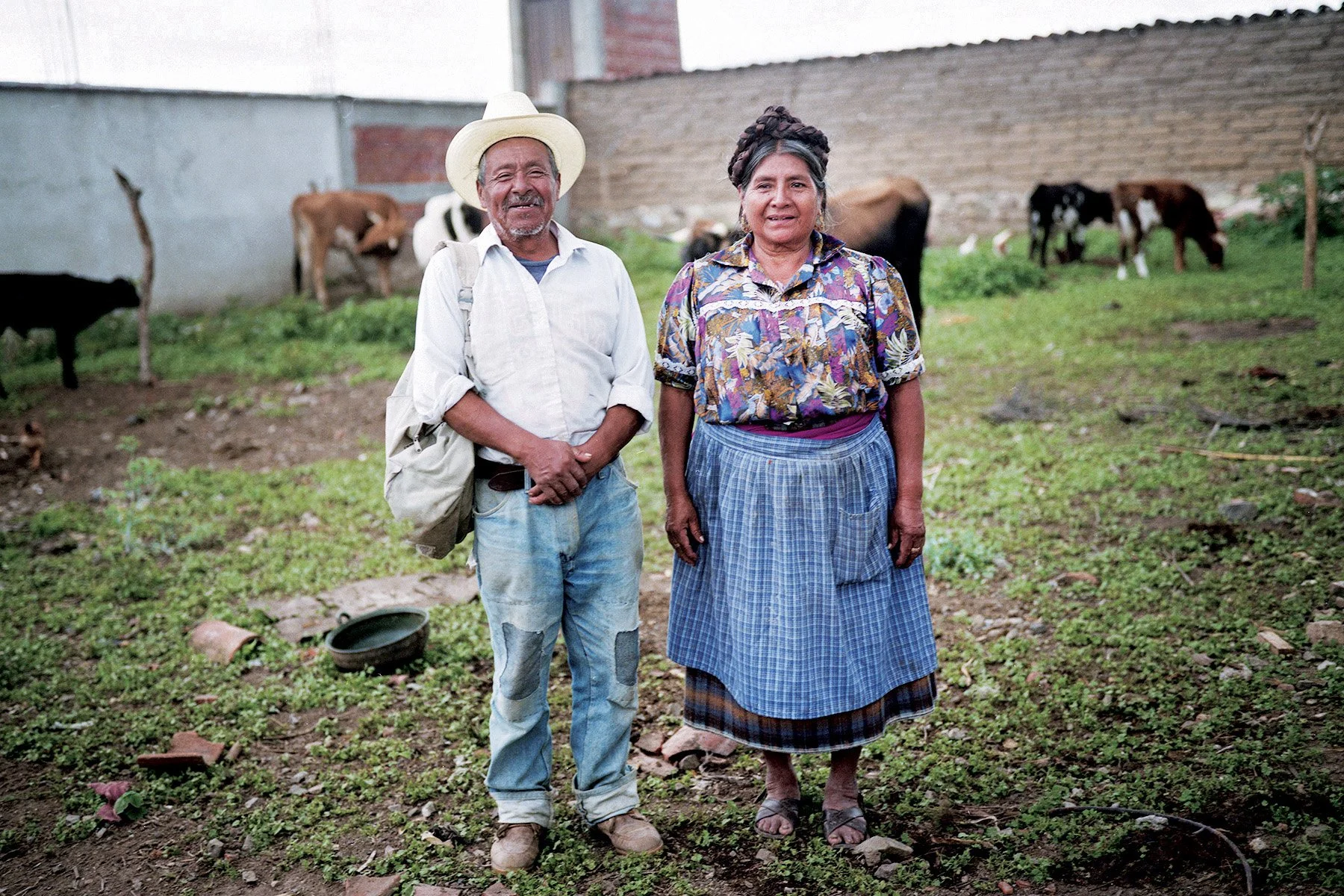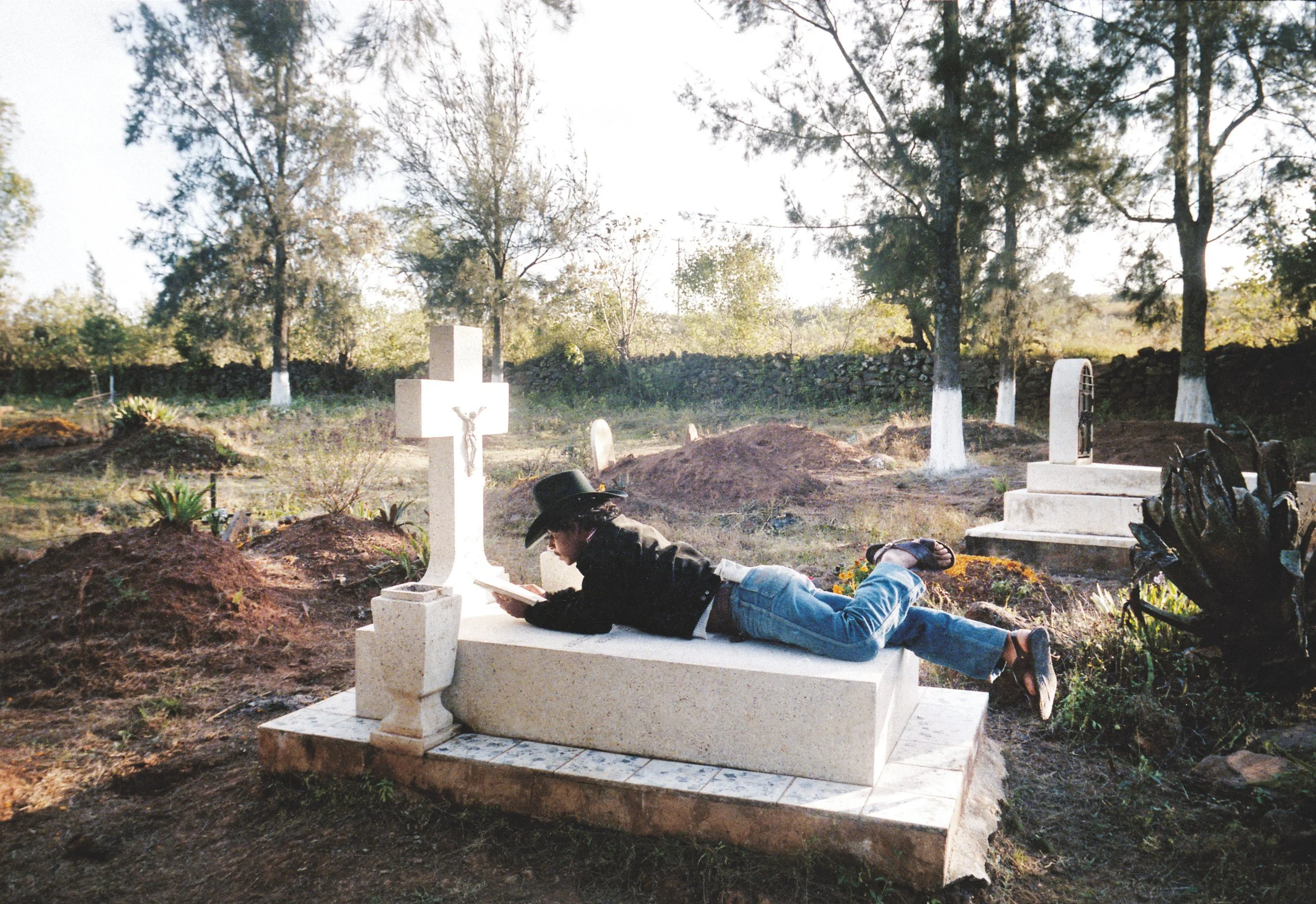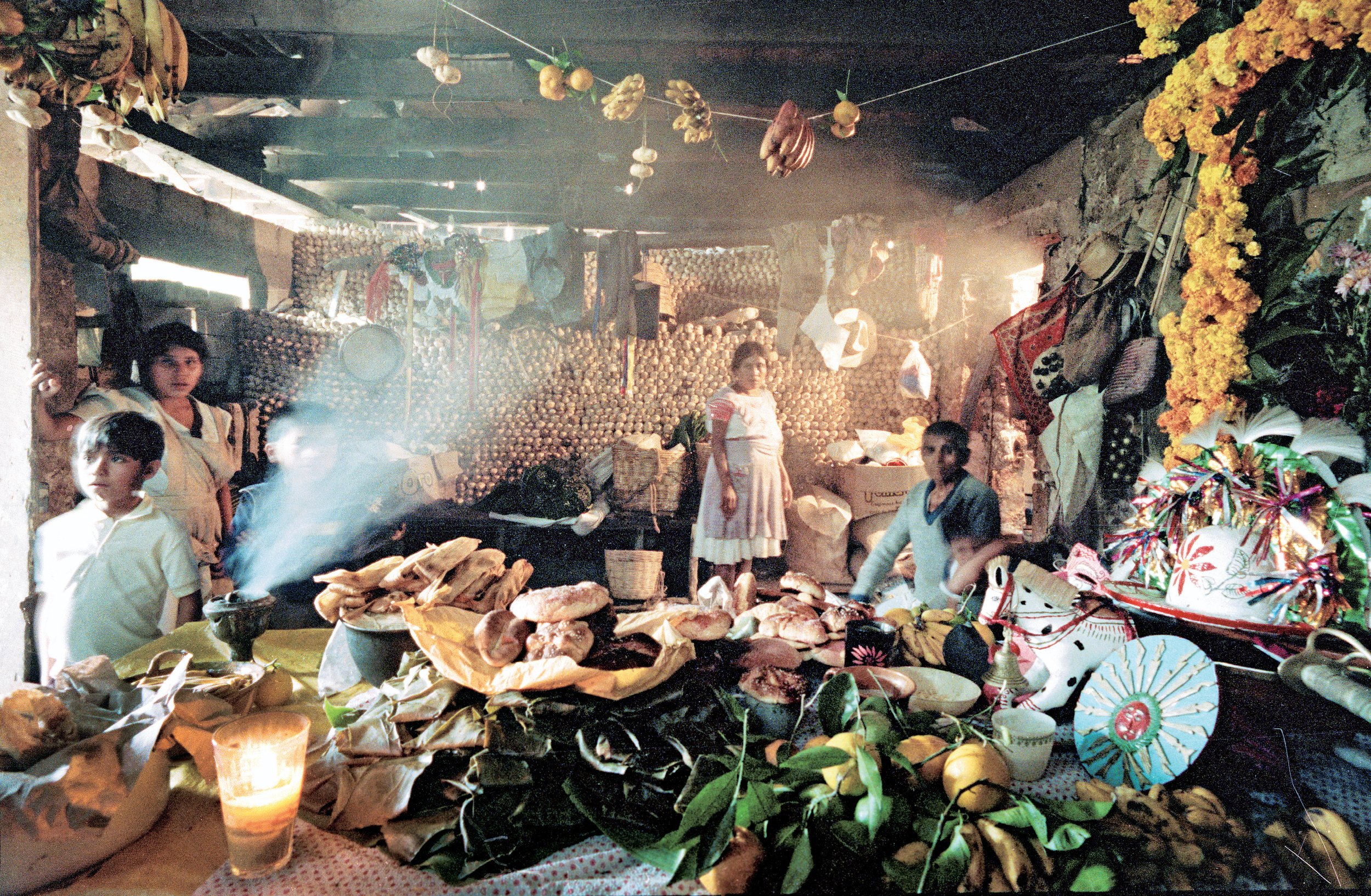FRENCH FRIES #6 THE TRAVELLER ISSUE: INTERVIEW WITH GEOFF WINNINGHAM
Interview by Ally Ferraro & Guilherme Ferrari
Geoff Winningham is an American photographer, journalist, and filmmaker best known for his photographs and documentary films focusing on Texas and Mexican culture.
Over the course of his career he has received two Guggenheim Fellowships, five grants from the National Endowment for the Arts, and numerous commissions. He has lived in Houston, Texas, and taught photography in the Department of Visual and Dramatic Arts at Rice University since 1969. In addition, he directs the Pozos Art Project, Inc., a non-profit enterprise offering art and photography opportunities to children in Texas and in Mexico.
I've just had a look at your book about Mexico, for how long did you travel?
The first photographs in the book are from 1984. So my first work in this project goes back to 1984. I live most of the time in Houston, where I work, but I have had a home in Mexico since 1999. I began traveling extensively in Mexico in 1982, and I have photographed the Days of the Dead almost every year since then. The photographs in the book go all the way back to 1984, and I began writing the text about three years ago, and I have spent the last couple of years structuring the book and working with Katy Homans, the designer. Getting the book. In the past, my books have been done by established publishers. But this time I decided I wanted to try to do all the production work myself and then sell the book online. So the book is only available for purchase only online, or on occasions when I do shows or book signings or something like that.
For how many days are the ceremonies?
The actual Days of the Dead are the same days as the All Saints and All Souls Day on the Catholic calendar, November first and second, but in Mexico the whole week before is part of the celebration. In many ways, the most festive and most beautiful days are the one or two days immediately before the first and the second. These are the times when the flowers are everywhere, when the food, the music, and all of the celebrations happen. The actual Days of the Dead days tend to be kind of quiet, although it varies a lot through different parts of Mexico. If you look at my book, you will see that there are three distinct regions that feature in the book. One is in southwest Mexico, in the state of Michoacán, and the celebrations in that region are the most solemn of all, including the all-night vigil in the cemetery. It's a quiet, very solemn celebration. The second area that I cover is in the state of Puebla, which is probably the most representative celebration of all of Mexico . It’s very festive, but it's also kind of quiet. Then, in Oaxaca, in southern Mexico, the most Amerindian part of Mexico, it’s one big party, a wild party with fireworks and dancing and crazy costumes. So the celebrations vary a lot across the country.
I read a story about flowers that were going from the cemetery to the houses.
My book is my attempt to make a visual document about Day of the Dead in Mexico, but it is also about my changing understanding of this ancient tradition. Initially, I knew nothing. I suppose that I thought Day of the Dead must be something like Halloween, because it was celebrated at exactly the same time of year and it sounded sort of scary, like Halloween. But Mexican people kept saying to me, “No, it’s not at all the same. You must come and see for yourself, because it’s the best time to be in Mexico.”
And indeed, it is the best time to visit Mexico, for one reason in particular. One of the traditional beliefs around Day of the Dead in Mexico is that the spirits of those who have died return to earth and come home to their family in some living physical form. For this reason, when you or I visit a Mexican home on Day of the Dead, we may be bringing the spirit of Uncle Juan, or the spirit of some other family member. So strangers are welcomed, and every home is open to visitors on these days, especially in villages and rural parts of Mexico.
But celebrations of the Day of the Dead are changing a lot, particularly in the big cities. For example, in Mexico City the celebration of the Day of the Dead was powerfully influenced by the James Bond film Spectre, where they created a huge parade, and Bond chased his villain through the crowd. They created a big, boisterous, loud, noisy parade with people in costumes that James Bond would be working his way through trying to find the villain. Well, that parade never happened before, but now it's a very popular event for Day of the Dead
So it's changing all the time.
Yes. The cities are changing more and even in my Mexican hometown, a very small town of about 1000 people in the state of Guanajuato, the children now dress up in costumes and go out to “trick or treat.” More and more, Day of the Dead is becoming a sort of fusion with American Halloween, which I find sad because I think Halloween is such a shallow celebration. I don't know what we're celebrating at Halloween. We dress up as ghosts, zombies, and witches, and we try to scare each other. But the Day of the Dead —really, when you understand it and when you experience it —is a day for the living. The spirits of those in the family who have died are remembered and their spirits are welcomed. All their favorite things are put out on an altar, their favorite foods, their favorite drinks, their favorite musical instruments. In doing this, those who are living are reminded that they are alive for only so long. That they need to love their life, to love this world, because they won’t live forever. The Day of the Dead, then, is a unique and beautiful celebration of life.
You photographed in black white in Texas and then you started using colors. Did that happen when you went to Mexico?
Mexico is a very colorful country. Vibrant color is a cultural fact of life there. The Mexican people paint their houses bright colors. They celebrate life with colorful festivities. I had decided to try photographing Mexico in color, not just because the country is so colorful, but because I wanted to work in a new medium. That was in the early 80s, and believe it or not, back then “serious photographers” didn't photograph in color. If you look back to the 1970s and you look at all of the great photography done around the world, except for a very few people who did great commercial photography, the colors of photography were black and white, and the important traditions and the history of the medium all came from this rich heritage of black and white photography. I was trained to photograph in black and white. I was essentially taught that color photography was vulgar, and yet I was restless to try it for myself. I wanted to try photographing in color. Mexico just seemed like the perfect place to try. For me, the decision to photograph in Mexico in color was both a decision to push my aesthetic boundaries and also a decision to explore someplace new. Mexico was just the right place for me at the right time.
How did you discover your passion for photography?
I took up photography at age 13 as a hobby. I saw a sort of fancy camera and I wanted to use it, to play with it. It looked like a cool thing to use. So I taught myself to use this camera and to take photographs, then I gave it up after a couple of years. I went on to playing with automobiles and dating girls. But I came back to photography a couple of years after I went away to college. I was an English major, but I saw this advertisement for a student to make photos for the university yearbook, and it was a paying job. I already knew how to photograph and how to process my film and make prints. I got the job, and I started photographing for the university. I was very fortunate because the people that were teaching me English, the professors, the mentors that I had, were aware, as not many people were at the time, that photography was becoming recognized as an art form, as a visual art form. If you go back before the 1960s, no museums collected photography, no galleries showed photography. It was very rare to find anyone who thought of photography as an art. But I got back into photography in college, and then when I graduated, I decided, “Well, I love photography so much, I think I'll see if I can get into a graduate school and really learn to do it well. I was accepted for study at the Institute of Design in Chicago, which is the descendant of the German Bauhaus, and I had a great two years of photographic education, and got my master’s degree. Even then, I wondered whether I would pursue my life’s work. I decided to give it a try for a few more years, and I had good luck right away. The first project I did in 1971 was a photographic study of professional wrestling. I published a book of my photographs, and it got very good reviews. I sold some prints, and I was on to new projects. I've been doing photography and publishing books for 54 years now.
Did you have a publisher on your first project?
Yes. I formed a partnership with a friend who was in the printing business. It was his first publishing effort, but he was a printer. And so we did that first book together.
Did you ever consider fashion photography or do you think the business side, the extreme business side of it, is too much?
I would love to do fashion photography, but I have never had the opportunity. Two of my favorite photographers did fashion. One was Irving Penn, clearly the greatest fashion photographer ever, a real artist in the deepest sense. The other was Bill Cunningham, the street fashion photographer, who died last year. The problem for me in doing fashion photography might be that I think of myself as having much imagination. I would be challenged to know how to set things up, which Irving Penn was so brilliant at doing. What I lack in imagination, I make up for with patience and curiosity. I have nearly infinite patience to hang around some event, come back to it again and again, to keep observing and waiting for revelation. If my subject is an interesting phenomenon like professional wrestling or the Day of the Dead, I will stay with it long enough to understand it, absorb it, and record it. I'm not looking to do fashion, but I am working on something very new for me, I am working to turn one of my projects into a dramatic piece a stage play. The project is one thatI did in Arkansas, a state to the north and east of Texas, where I photographed the vernacular architecture — the barns, the churches, the stores —and then collected stories of people who had lived and worked in those buildings. I'm working now to put those photographs and stories into a dramatic production.
Have you ever thought of having a political intention by doing that? Because you are interacting directly with people.
Politics is in the air everywhere here right now. Our country is in a political crisis, so politics are everywhere. But when you ask me about my work in politics, my first thought is I don't think politically in terms of what I photograph. In terms of culture, I sometimes think of myself as more of a visual anthropologist than a photographic artist. My work is a mix of documentation and art, but I have much more of an anthropological instinct. The things I photograph are things that I want to study and understand and preserve.
Do you think art is sometimes too concerned with aesthetics?
Is art due concern with aesthetics? What is aesthetics if isn't the study the essence of art. My immediate answer is yes, because I think the enemy — the great enemy of all art —is pretense. The art that I love the most is what I would call vernacular art, folk art. Almost my favorite architecture is vernacular architecture, barns and swords and churches. My favorite music tends to be folk music, and my favorite photographs tend to be those unconcerned with art. Yesterday in The New York Times, there was a photograph of the first home run in the World Series of baseball, and nd it was a picture shot from above, of a guy scoring a run. It was an elegant, beautiful photograph, not made not by an artist, but by a sports photographer, whose simple goal was to photograph the player scoring the first home run. But in the process, he made this beautiful photograph, without being concerned with aesthetics. For me, the most boring photographs are those that are all about aesthetics, all about concern with trends and styles. I'm still interested in what's going on in the world around me. My favorite writer about photography, John Szarkowski, once wrote that the best photographs are about the precise and lucid description of significant fact. Precise and lucid description of significant fact. Those words are open to all sorts of interpretation and understanding, but the point is that the best photography deals with the factuality of the world.
I don't know if you saw the movie The Sheltering Sky by Bertolucci. At one point, John Malkovich says that a tourist thinks about home the minute he arrives, whereas a traveler might never come back. Which one are you?
The latter. I try to be a traveler. If you recall the quote at the beginning of my book on the Day of the Dead, the quote from Camus, he writes that we should not say that we travel for pleasure, that we travel for fear, Traveling, Camus asserts, is a kind of “spiritual testing” which brings us back to ourselves. All of my years of travel to the Day of the Dead in Mexico have brought me back to myself, to a deeper understanding of myself, as I have witnessed and absorbed the essence of this important ceremony.
When did you discover the Days of the Dead? When was the first time you traveled to Mexico?
The way I “discovered” the Day of the Dead, was my first viewing of a photograph by the great Mexican photographer, Manuel Alvarez Bravo. I reproduce in the book and describe the initial impression that it made on me. I visited Bravo in 1983 in Mexico City, and he was so kind as to show me a lot of his photographs. I noticed that a lot of his photographs had references to death. But I particularly noticed this one photograph of a young woman holding a skull. Across the forehead of the skull was written "Amor.” That picture, with the title "Dia de los Muertos,” puzzled me, because at that point in time, in 1983, I had never heard of Day of the Dead. This picture, this beautiful photograph, gave me no answers. It just left me with all these questions. Why is she holding the skull and why is the word "love" on it and why does she seem to be presenting it to me? So that picture, more than anything else, said to me, I have to go and try to understand what this is all about. So that's why I started traveling to Mexico every year and that time, to try to understand what that was about, because I had no idea.






